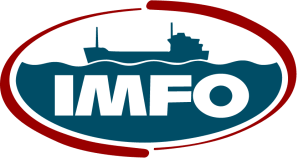
Fumigation is introduction of toxic gases of sufficient concentration into the room – building, grain elevators, railway cars, containers – so that the gas would fill the entire area and cause death of pests. This method is applicable when the respective area or pests in products cannot be reached by usual methods of control.
Fumigant is a chemical that at the appropriate temperature and humidity can turn into a gas of appropriate concentration and become a deadly poison for pests. This means that the fumigant acts as a gas in the strongest sense of the word. Unlike mist or liquids, fumigants act as single molecules. This allows the molecules to be absorbed by the required material and leave it after the job is done. In essence, fumigants are toxic gases that can be used for pest control.

PELIAS is the member of the International Maritime Fumigation organization (IMFO), which provides guaranteed fumigation to customers, by controlling the fumigation at both load and discharge port.
Our fumigation services include:
Much grain and products of its processing (approx. 15%) is destroyed or damaged by pests that emerge in warehouses of grain processing companies, farmer or agricultural companies under various conditions.
The most common insects and their larvae damaging grain and its products are: wheat weevils, Laemophloeidae, mealworms and Tribolium confusum, snout moths and ticks. In warehouses, grain pests begin propagating when temperature is high enough – 15-20 °C.
Fumigation of grain and its products is carried out for their storage period, as well as during loading to warehouse, during transit – in ships, containers, railway cars.
The most effective disinsection method for grain and its products is fumigation (from Latin fumigo – smoky). It is a type of disinsection involving the use of aluminium phosphide or magnesium phosphide gases affecting pests through their respiratory organs.

Fumigation of grain compartments is performed using a probe for inserting a phosphide gas tablet into the mass of the product. The insertion of the preparation is done with a special device – fumigation probe. Fumigation of grain must be carried out if bulk height is up to 5 m, moisture content is up to 22% and temperature is not lower than 10 °C. Using tablet insertion probes, grain height can reach up to 7 m in surface warehouses. After fumigation, the product is sealed with a special film. Exposure (waiting period) depends on air, product temperature and lasts 7 to 21 days. Measuring the concentration of gases during exposure is one of the most important activities of professional fumigation.
There are several ways of fumigating grain and its products in storage towers: by inserting fumigants, by loading the product into storage towers, using probes or applying the gas recirculation method.

The fumigant insertion method is applicable during loading (or transhipment) of grain and its products in storage tower tanks. The tablet-shaped fumigant is inserted using a special device – an automatic tablet dispenser – or manually. The fumigant is evenly distributed by filling the storage tower with the product through the top loading hatch. If the elevator system allows loading of multiple grain tanks at the same time, then multiple grain towers can be fumigated simultaneously. It is strictly forbidden to carry out other operations and to be in the elevator tower during fumigation and exposure. The disadvantage of such fumigation is the additional energy and time consumption related to transhipment of grain from tower to tower.


Specially perforated antistatic pipes are previously inserted into the tower tank along all its height. Phosphide gases are supplied to the product filled in the tower through the pipeline by pressure. Smooth filling of the layer of the products stored in the tower with gases is carried out through the pipeline hole (perforated cracks). Preliminary conversion of solid phosphide (tablets or pellets) to gas takes place by action of special gas reducers, which also pump gas into the pipeline. Technology is convenient and cost effective. The gas reducer is connected to the required tower pipeline to pump phosphide gases. To use this technology, the tower must be upgraded.
Risk assessment:

When dealing with cargo fumigation, you should always evaluate the potential risk:
Cargo fumigation on ships – applying SIA PELIAS basic principles:
Professionalism: being members of International Maritime Fumigation organization (IMFO), we have acquired knowledge that we use in providing fumigation services to our customers.
Economy: You can choose the most appropriate type of fumigation from the methods provided by our company, taking into account operations most favourable for you (defining the product infectiousness level, storage-loading place, time of performance, etc.). This will ensure that the service is provided with the conditions most favourable for you.
Leadership: Our international capabilities mean that we can provide fumigation services during transit almost everywhere.

Innovations: We can guarantee the effectiveness of fumigation thanks to good knowledge of pest biology and methods of using fumigants. Experience in applying ship recirculation systems. Members of our organization can expect cargos in ports almost anywhere in the world and control the fumigation process from loading port to unloading port.
Growth: We guarantee that fumigated cargo from ports of Liepaja, Riga or other Baltic region ports will reach the consignee in Rotterdam, Santa, Shanghai or other ports in the world free of pests and residual dangerous gases.
Protection: We work in strict compliance with the recommendations of the International Maritime Fumigation organization (IMFO) and even stricter safety requirements to our employees in managing high-risk situations. We provide guarantees and safety.